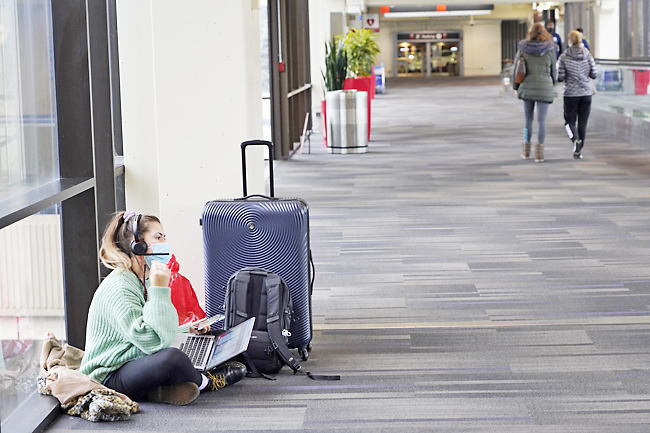Laura McMullen
AP – You probably know to plan and save for the big and boring expenses, also known as financial needs. But what about the fun stuff? Expenses that don’t put a roof over your head, but do provide joy, rejuvenation and other hard-to-quantify benefits are worth saving for, too.
In fact, they deserve their own account, said Los Alamitos, California-based certified financial planner Delia Fernandez.
“Figure out what keeps you going, what makes all of this worthwhile to you, and put money aside to make that happen,” she said.
WHAT KINDS OF EXPENSES ARE WE TALKING ABOUT?
When it comes to feel-good expenses, each person has their own preferences, said New York-based financial therapist and licensed mental health counsellor Aja Evans. For example, some people would find an intense cycling class to be energising and confidence-boosting.
Others would rather do pretty much anything else.
Consider which goods, services and activities typically bring you joy. Yes, your budget will determine what, exactly, you can afford. But, for now, reflect. Fernandez asked: “What’s going to get you through these times? And what makes your life valuable? What refreshes you; what inspires you?”
A few ideas: services like massages; goods like fresh flowers; activities like vacations and date nights.

WHY SHOULD I SET UP A FEEL-GOOD ACCOUNT?
Earmarking money for these kinds of expenditures may help you be more intentional with spending. For example, say you put USD25 from each paycheque in a vacation fund. With that money safely stashed, you can’t mindlessly spend it on impulse purchases.
You’re also protecting that money from financial demands. Otherwise, if all your available money were in one bucket, Evans said your self-care spending would likely be the first to cut when money is tight.
By devoting money to a specific kind of expense – be it a mortgage or manicure – you’re creating a budget. And budgets help prevent you from overspending.
Say you have up to USD50 to spend each month on brunch with friends, and you’ve already spent USD35. This weekend, maybe you still enjoy brunch but skip the special drinks that would put you over the USD15 you have left.
Ideally, this plan also hedges any potential guilt about spending money on yourself. As Fernandez said: “You put it aside for that purpose.”
HOW DO I SWING THIS IN MY BUDGET?
Hopefully you’ve been convinced to treat yourself in the New Year. Now plan for those treats.
One way to determine how much you can afford to spend is to apply the 50/30/20 rule to your monthly take-home income.
The goal of this budget method is to split your money as such: 50 per cent toward needs, 30 per cent toward wants and 20 per cent toward savings and debt repayment. If you follow that framework, your new feel-good fund would come from that “wants” category.
Not trying to officially budget at this point? Here’s another approach: Start with your monthly income, then subtract all the necessary expenses (needs), which include housing, food, transportation, basic utilities, insurance, child care and other expenses that enable you to work, as well as minimum loan payments.
Next, subtract contributions toward savings goals (like an emergency fund), as well as payments toward retirement accounts and debts.
What’s left is your discretionary money. Decide how much of that to regularly contribute to your new fund. “That could be USD10. That could be USD50. That could be USD100,” Evans said. “The main point is that you’re actually setting aside the money.”
Ideally, these contributions go directly from your paycheques to a new fund, Fernandez said. (Work with your employer to set up a new direct deposit.) If that method is unavailable, set up recurring automatic transfers from your everyday checking to the new account.
WHERE DO I KEEP THIS MONEY?
Fernandez recommended keeping this fund in a savings account, in which you’ll likely earn interest. Use it for your monthly spa visit, for example. Or watch your savings grow as you collect cash for a trip or large purchase.
If you plan to use this fund often – say, for frequent morning smoothies – opt for a chequing account. Open it at a financial institution you don’t already use, so the new account isn’t too easy to tap for everyday expenses.
WHAT’S NEXT?
Enjoy the stuff for which you saved. Then regularly revisit your plan, Fernandez said. You may want to change how much you contribute – perhaps more after a raise or less after an emergency expense.
What you save for could change, too. Maybe you wind up preferring drawing lessons over cycling classes.
“We all have to have a plan,” Fernandez said, “but we all have to update it and change it when the facts change.”








